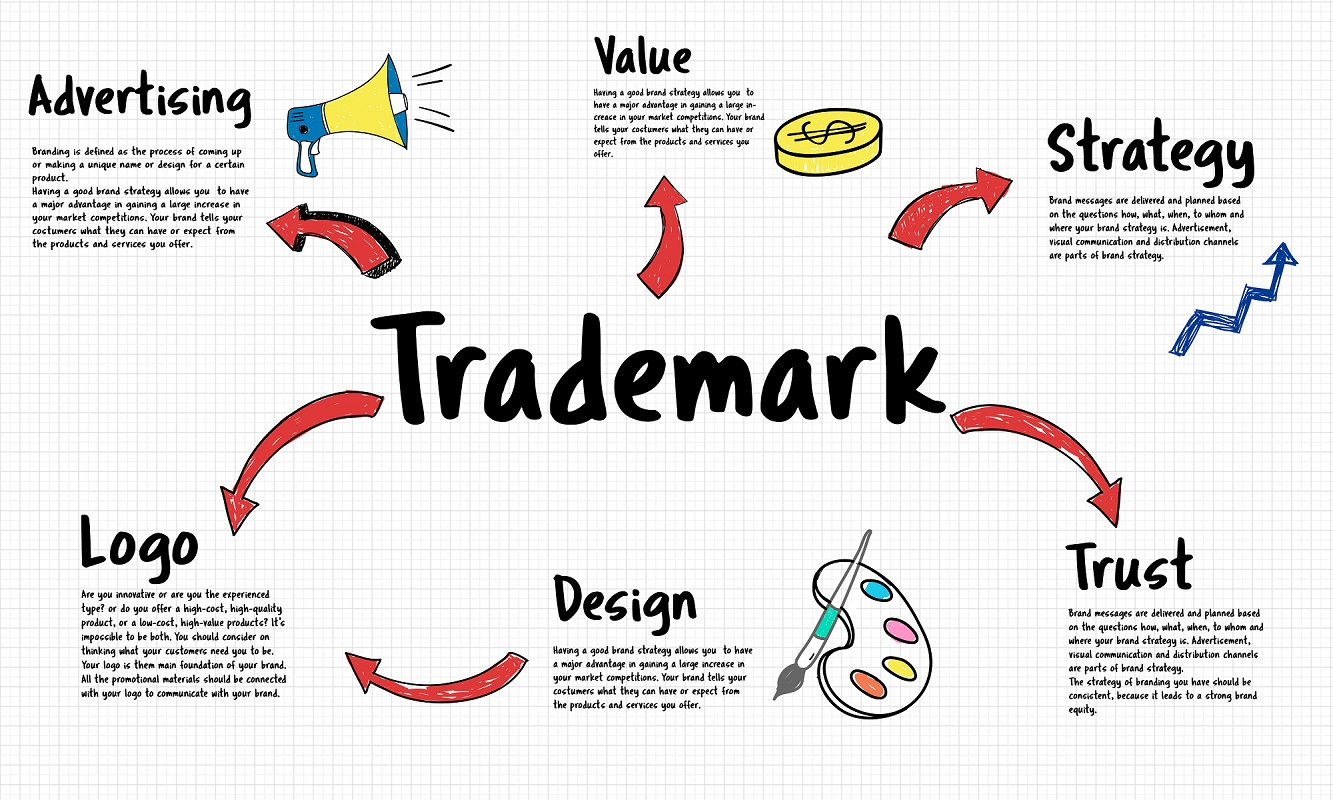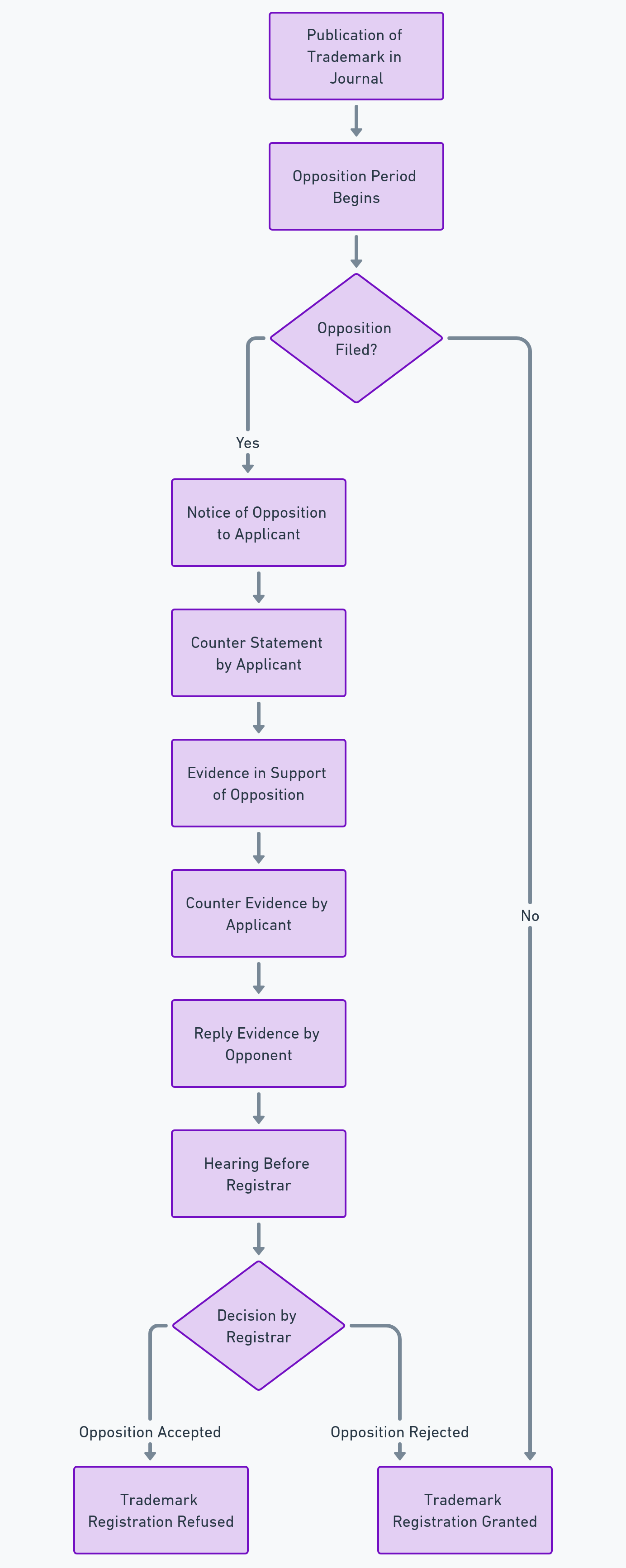Zatapult

Trademark law in India is governed by the Trademark Act, 1999 (“Act”) and it includes registration, protection, and prevention of fraudulent use of trademarks. In order to prevent the creation of fraudulent and conflicting registrations by a subsequent trader, the Act provides for the process of opposition to be initiated by third parties to the application, including prior brand owners. The trademark opposition is a crucial phase which is decisive on whether a trademark may or may not be registered.
Important Stages of a Trademark Application’s Lifecycle
To understand the term “trademark opposition”, it is necessary to briefly understand the various stages a trademark undergoes before it possibly invites trademark opposition:
- After the proprietor is satisfied with the name of the mark post conducting a trademark search, he should proceed with the application to register the trademark. Prior to registration, however, the applicant must ensure that the trademark is not descriptive in nature or falls under Section 9 or Section 11 of the Trademarks Act, 1999 as those are grounds which may invite opposition.
- If the Learned Examiner (officer assigned by the ministry) finds any grounds because of which the mark is not fit to be registered, like descriptive nature or mark having scandalous matter, he will raise an objection. The proprietor should then give a reply to the report and a hearing will be conducted. If the Examiner is satisfied with the arguments advanced, he will accept and publish it in the Trademark Journal. The publication in the Trademark Journal opens up the window for trademark opposition.
Trademark Opposition
Once the mark has been published in the journal, it is open for the general public, including the proprietors of other trademarks, for opposing the registration of the trademark. The mark is published in the trademark journal and the opposition is required to be file to a published application within a period of 4 months.
Section 21 of the Trademark Act, 1999 defines trademark opposition as,
Any person may, within four months from the date of the advertisement or re-advertisement of an application for registration, give notice in writing in the prescribed manner and on payment of such fee as may be prescribed, to the Registrar, of opposition to the registration.
Who can file an opposition?
The opponent is not required to have an application/registration in India to oppose any Trade mark. A member from the public or trade can also initiate opposition against an application, without being a person aggrieved or that is, a person whose rights are being affected by the existence of the mark on the register.
When can an opposition be filed?
Any person can initiate an opposition proceeding to a trademark application in India to oppose the registration of any trademark when it is accepted and advertised in the trademark journal. An opposition can be filed within four (4) months from the date of publication of the mark in the trademark journal.
Further, on expiry of the four months deadline, no notice of opposition can be filed and the Trade mark proceeds to registration. The only recourse left thereafter is filing rectification action against the registration.
On what grounds can a trademark opposition be filed?
The basis of trademark opposition is to ensure that no other mark which is deceptively similar or falling within prohibitions under the Trademark Act, 1999 shall be allowed to be registered.

Deceptively similar trademark
For example, ZARA, a well-known fashion brand brought action against a Delhi-based restaurant having a similar brand name called Zara Tapas Bar. This was a deceptively similar mark as the name Zara has been identified with fashion, and not restaurant services. As a result, ZARA fashion filed a lawsuit against the restaurant, which was heard in the Delhi High Court. The court ruled in favour of Zara Fashion and ordered the restaurant to change its name.
The opposition can be filed to a conflicting mark on the following grounds:
- If the trademark is similar or identical to an earlier or existing registered trademark– Similar trademarks are those marks that are easily mistaken with another already existing mark. This means the mark that is so resembling of another that it is likely to confuse or deceive the average consumer.
- If the mark is devoid of distinctive character– Trademarks which cannot distinguish the goods provided and/or the services rendered can be a ground for absolute refusal for a trademark to be registered and is a ground of opposition as well.
- If the mark is generic or descriptive in nature– Generic words, qualifying words or descriptive trademarks do not qualify for registration and this can be a ground of opposition. For example, the trademark, “Tasty Burger” cannot be registered for a restaurant selling burgers as it falls under a descriptive trademark category.
- If the application for the trademark is made with bad faith– Bad faith is considered to be an unethical and unlawful practice in trademark law. If a trademark owner can prove that another party acted in bad faith, they may be able to successfully oppose the registration or use of the trademark.
- If the mark is customary in the current language or the established practices of business– These trademarks are likely to deceive the public at large and hence they can be opposed. For example, an opposition could be filed to a mark “Bespoke” for software products.
- If the mark is contrary to the law or is prevented by law– such marks fall under absolute grounds of rejection of the mark applied for and as a result act as a strong ground for opposing the trademark. It also includes the case where the trademark is prohibited under the Emblem and Names Act, 1950 or is an international non-proprietary name (INN) in the category of drugs.
- If the mark contains matters that are likely to hurt religious feelings of any class or section of people– If a trademark owner can prove that the trademark or mark applied for by another party has the potential to hurt religious feelings of any class or section of people, this can be used as a ground of opposition.
Trademark opposition steps
Step 1- Notice of opposition
The first stage in opposing a trademark is to fill out a notice of opposition within 4 months from its publication in the trademark journal. The notice of opposition is in the prescribed TM-O form. It can either be filled online or offline along with the prescribed fee of INR 2,700 for online filings or INR 3,000 for offline filings. This notice shall clearly state the grounds on which the trademark is being opposed and should also be annexed with supporting documents in support of the grounds.
Step 2 – Counter statement
The applicant on which the notice of opposition is served must reply to this notice within 2 months of receipt of the notice with their grounds in support of the application.
Step 3- Evidence in support of notice of opposition and application
Within the duration of two months which can be extended by one month of receiving the counter statement, the opponent may submit further evidence in the form of an affidavit to support the claims made in the notice of opposition. The opposing party should inform if they want to waive this opportunity to the Registrar or else the opposition proceedings will be deemed to be abandoned.
On receipt of the evidence in support of opposition, within 2 months, the applicant will reply to the same by way of evidence in favour of applicant.
Step 3- Reply to evidence
If the opponent so wishes, they may file additional evidence in support of the claims made in the Notice of Opposition and evidence in support of the opposition already filed, and rebut claims made by the applicant in the Counter Statement and their evidence, within one month of receiving the evidence/waiver. This opportunity is provided to achieve a finality in the opposition proceedings and to also allow the opponent to rebut the evidence produced by the applicant, if any.
Step 4- Hearing
After receiving the documents and the evidences, the Registrar provides an opportunity to both the parties to present their arguments on/ against the registration of the trademark. This is known as an opposition hearing. After hearing the parties and considering the evidence, the Registrar must decide whether the opposed trademark should proceed to registration and, if so, subject to what conditions or limitations.
Once the opposition hearing is over and the Registrar passes an order either accepting the opposition and rejecting the application, or dismissing the opposition.

Documents / information required for opposing a trademark
1. Details of applicant
- Name, Address, Nationality, etc of the applicant.
- Small body corporates/ start-ups need to provide their status certificate.
2. Power of Attorney
- It allows the attorney to file the trademark opposition on your behalf.
3. Details about the marks
- Detailed information about the mark to which the opposition is to be filed, i.e. name and basic grounds for filing the opposition;
- If the opposition is filed on a prior trademark, details of the prior mark, its registration / use details.
4. Information about use, promotion, advertisements, foreign registration, and well-known character, as are applicable for the prior mark
- This information is required to be provided first in the Notice of opposition and later supported with suitable documents strengthening the prior trademark, its user and promotional work (at evidence stage).
Common Pitfalls vis-à-vis Trademark Opposition
- Missing the opposition deadline- failing to file the opposition in the stipulated time frame can lead to the aggrieved party in losing the chance to oppose the conflicting trademark. One must ensure strict adherence to the timeline.
- Failure to conduct thorough research- inadequate research and evidence presents a weak case. Thoroughly investigate the conflicting mark and gather relevant evidence to strengthen the opponent’s position.
- Lack of proper legal representation- Filing an opposition without a legal counsel can be risky as a qualifies trademark attorney can navigate this process smoothly and one can rely on the years of legal experience of the attorney.
- Neglection in monitoring the opponent’s actions- there should be a vigilant monitoring of the opponent’s actions by logging in to the e-registry of trademarks and checking the opposition status of the trademark. Failure to monitor these developments may impact the strategy.
Conclusion
Trademark opposition is a very crucial step for the enforcement of trademark rights. A trademark owner desirous to oppose the registration of a trademark should ensure that the opposition is initiated at suitable times. He should also ensure that there are sufficient grounds and proper legal representation during the opposition process to make sure the opposition is successful. Additionally, he should ensure that the evidence supporting their mark is thorough and gets submitted within the stipulated time frame of the proceeding.
Proper opposition framework provides that there are multiple opportunities for the applicant and the opponent to defend their respective positions. Based on careful consideration and determination by the authority, a decision on the opposition and the opposed trademark application is made. This ensures that there is an effective remedy under the law to prevent fraudulent use as well as any coincidental action of a subsequent applicant.
Article contributed by Ms. Eesha Parande.